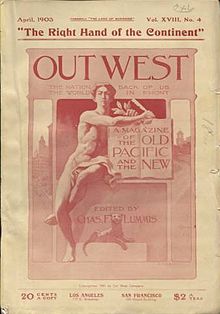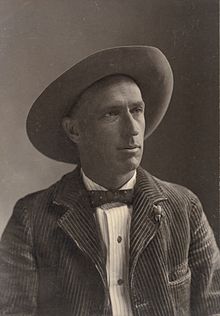Today, Thyrsus Press celebrates the brief life and melancholy verse of the nearly forgotten California poet, Nora May French, whose final work, The Mourner, serves as the subject of our new broadside.
Although born in Aurora, New York, in 1881, she soon moved with her family to a ranch outside of Los Angeles. French’s uncle was a stern Presbyterian minister by the name of Henry Wells, whose thriftiness and business acumen led him to great success as one of the founder of Wells, Fargo, & Co. Sadly, his good fortune did not rub off on French’s side of the family, which suffered a series of devastating set backs in their new home including a house fire and a failed fruit crop.
While studying at the Otis Art Institute, she became engaged to a wealthy Santa Cruz timber merchant, and notorious womanizer, named Captain Alan Hiley. Hiley ultimately refused to leave his wife for her, leaving her heartbroken, but the experience inspired her to take up the pen and led to the creation of her most ambitious work, a 22-poem cycle called The Spanish Girl.
Source: California Faces: Selections from The Bancroft Library Portrait Collection
The success of The Spanish Girl drew her into the circle of California writer and preservationist, Charles Lummis, who published her work his the regional magazine, Out West, which was designed to seduce frigid north easterners with tales from “the right hand of the continent”.
French eventually found her way to post-quake San Francisco, where she dated Henry Anderson Lafler, literary editor of The Argonaut, and befriended humorist Gellet Burgess. She lived with her sister, Helen, in a apartment at 415 Lombard Street and worked as a "Hello Girl" at the switchboard of the nascent Pacific States Telephone Company - an experience that she documented in an article in the Saturday Evening Post entitled "The Diary of a Telephone Girl".
The Saturday Evening Post, Volume 180, Issue 2, October 1907
Distraught over her failed relationships and her inability to support herself as a poet, French retreated to the bohemian resort of Carmel-by-the-Sea, where she boarded with poet George Sterling and his wife, Carrie. Despite the company of her new friends, French's spirits did not improve. Following an aborted attempted on the life of a former lover, French took a fatal dose of potassium cyanide, purchased from a local chemist under the pretext of needing it to clean the silverware, and died in bed on the night of November 13, 1907. She was 26 years old.
James Hopper, Herman Scheffauer, Harry Lafler, and George Sterling at the Bohemian Grove, 1907. (Source: UC Berkeley, Bancroft Library)
Although displaying an occasional tendency towards sentimentality (her poem about a late cousin’s devoted dog springs to mind), French’s poetry contained far less of the archaic pomposity and obsessive self-mythologizing that characterizes the work of other Western poets of the period. Her poems were spare, fragile, personal and intimate. Many evoke Sappho in their directness and in their celebration of the sublime experience of nature and the pangs of unrequited love.
French felt ill at ease in the company of other people – particularly women – and struggled to find a place for herself, even in the company of California’s self-styled Bohemians. She considered herself “queer” and had “an idea that all sensible people will ultimately be damned”.
The Los Angles Times summed up her death with the following extended headline:
“By Her Own Hand.
Young Woman Ends Her Life
Rises at Midnight Hour and Takes Poison
Young and Beautiful Woman Who
Has Written Verse for Magazines
Carries out Suicidal Impulse Long
Entertained—Father and Sister
Residents of Los Angeles.”
San Francisco Call, Volume 102, Number 169, 16 November 1907
Several years after her death, a group of her friends, including Lafler, Sterling, and Porter Garnett, published a collection of her poems, but interest in her work rapidly waned and she has been largely forgotten. We hope that this small broadside might reignite at least a bit of renewed passion for this undeservedly neglected poet.







